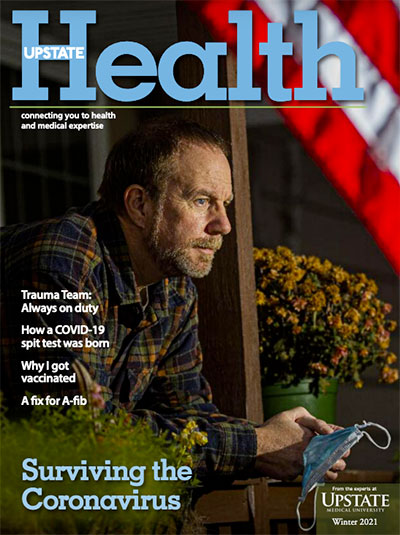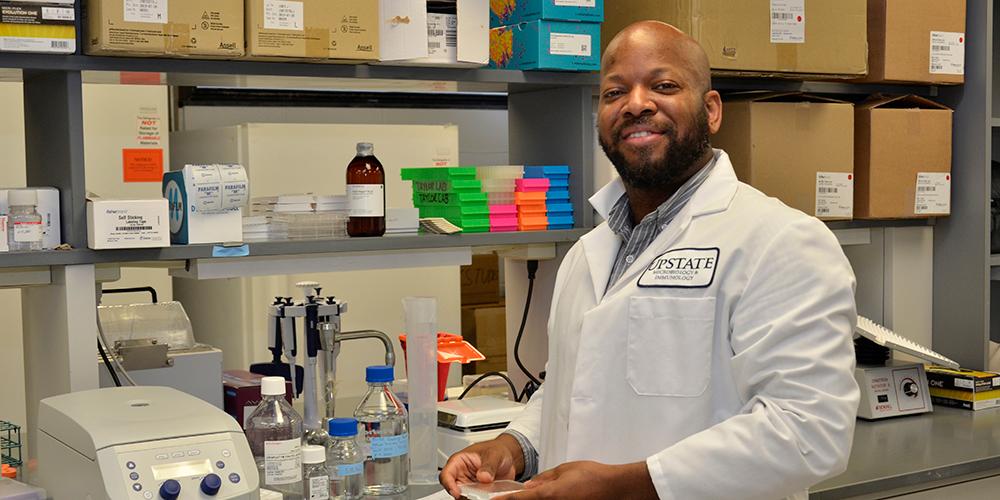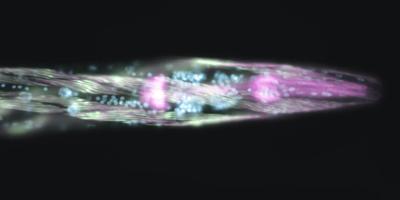Understanding HIV
BY DARRYL GEDDES
When activated, CD4 T cells lead the body’s immune system in fighting off infection. But not so with HIV, the virus that causes AIDS.
HIV – the human immunodeficiency virus – overtakes these activated CD4 T cells, disarming their ability to fight the invading infection.
What’s puzzling for scientists is why HIV prefers to replicate in these active CD4 T cells and not in resting CD4 T cells.
An Upstate scientist has solved this puzzle.
Harry E. Taylor, PhD, published his work in the scientific journal Cell Reports. Taylor joined the Upstate faculty in the fall of 2019 as an assistant professor of microbiology and immunology. He earned his doctoral degree from the Johns Hopkins School of Medicine.
“Only activated CD4 T cells have the required resources to fuel the intracellular steps necessary to support HIV replication factory assembly lines at full throttle,” Taylor describes. “These activated T cells have ample stockpiles of the building blocks that HIV needs to make copies of itself.
“These building blocks are at much lower levels in resting CD4 T cells,” he says. “Therefore, these resting CD4 T cells are of little use to expand an army of progeny of the invading virus.”
Taylor says HIV replicates in the hospitable intracellular environment of activated CD4 T cells — while at the same time inactivating the immune response that protects individuals from infections.
“In our current study we have delineated the steps that HIV needs for replication and how they are supported by the various building blocks in these activated T cells,” he says.
An estimated 1.2 million people have HIV in the United States, and one in seven are living with HIV but don’t know it, since they are likely showing no symptoms and have not been tested.
Antiretroviral drugs have made HIV infection a manageable chronic condition, for some. But many of these drugs have significant side effects, and a missed dose can have serious
implications for reawakening dormant virus in these individuals.
Taylor says that much work is being done to identify new therapeutics and treatments for people with HIV, but it’s important to remember that there is neither a cure nor a vaccine, and drugs don’t eliminate the virus from the body.

Read online at issuu.com
Subscribe to our printed publication in the mail or to receive an emailed electronic version.





